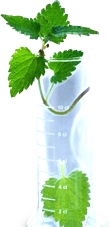



Author(s): Meena Manish Kumar*, Jaiswal Mohan Lal
Acharya Sushruta mentioned Gilodya under Madhur Varga, and Karma of Madhur Rasa is mentioned as Balya. On the basis of morphological character and habitat described by Acharya Dalhan, Acharya Priyavrat Sharma has concluded that Gilodya is Ceropegia bulbosa roxb. Ceropegia is tropical Genus of climbers and it contains about 200 species, of which 49 species are found in India. It grows sporadically in red lateritic soil. Among different species Ceropegia bulbosa roxb. is one of the widely distributed species but still threatened. Gilodya (Ceropegia bulbosa roxb.var. bulbosa) belonging to family Asclepiadaceae is found distributed throughout India. In Rajasthan its local name is “Khadula”. Ceropegia bulbosa is a useful medicinal plant. Traditionally, it is used for kidney stone, diarrhoea, dysentery, to increase fertility and vitality. The tubers and leaves are eaten and considered to be tonic and digestive. Tubers of Gilodya are locally and traditionally used by tribal and villagers of Rajasthan to gain strength and energy. Wild edible tubers contain more crude fibers, crude proteins and carbohydrates.